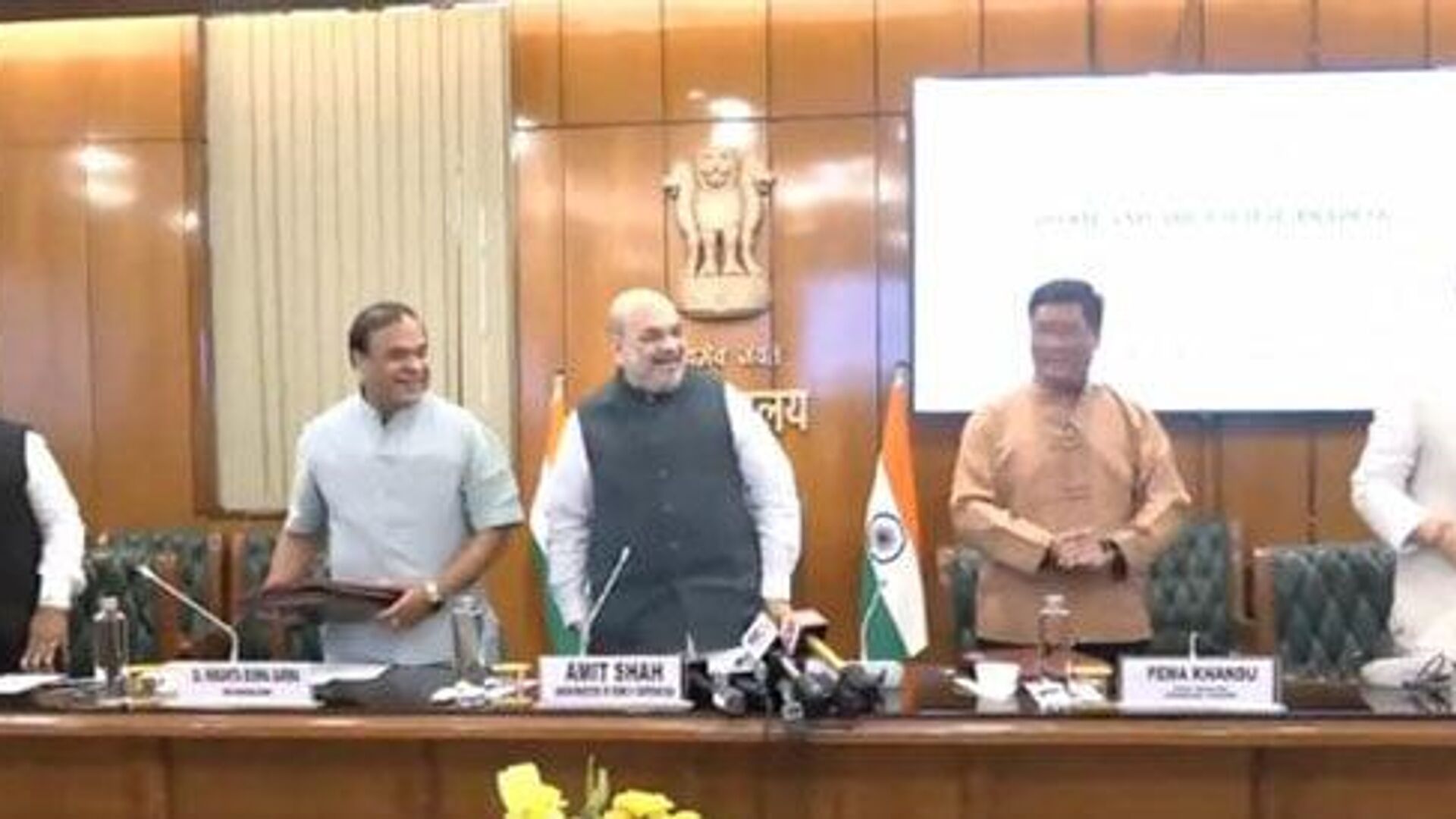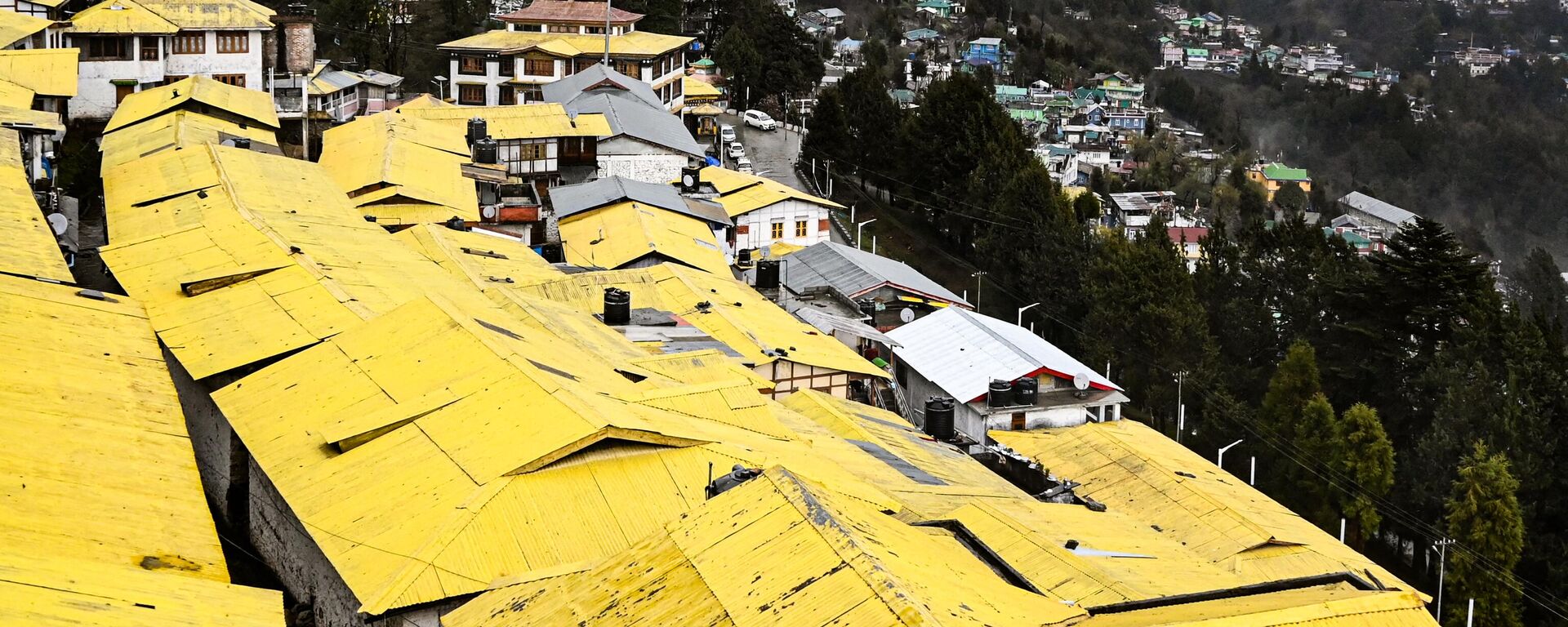Assam, Arunachal Pradesh State Chiefs Make History By Signing Pact to Resolve Border Dispute

© Photo : Twitter/ screenshot
Subscribe
The north-eastern states of Assam and Arunachal Pradesh share a 804km border. Arunachal, which was carved out of Assam state in 1972, has been prey to border disputes ever since. In 1987, Arunachal Pradesh gained its statehood.
The Arunachal Pradesh and Assam state governments on Thursday signed a memorandum of understanding (MoU) in the presence of federal Home Minister Amit Shah in New Delhi.
"The signing of an agreement for the settlement of an inter-state boundary dispute between Assam and Arunachal Pradesh is a great achievement. Today, we have passed the milestone for the establishment of a developed, peaceful and conflict-free north-east," Shah said during the signing of the MoU.
The signing of the MoU is designed to end border disputes along the boundaries of both north-eastern states.
Assam-Arunachal Border Dispute Dates Back to British Rule
The border dispute dates back to British rule in 1873 when they announced an “inner line” notified under the Bengal Eastern Frontier Regulations (BEFR). At that time, the British demarcated an imaginary boundary between the plains and the frontier hills based on their territory and commercial profit. However, the British had no respect for the tribes living in the area.
After independence, the area was known only as Assam. Since then, four states, largely tribal - Meghalaya, Mizoram, Nagaland and Arunachal Pradesh - have been carved out of Assam.
Soon after the Assam state assembly began in 1950, it set up a sub-committee headed by Gopinath Bordoloi to decide how tribal and “excluded areas” could be administered. Many tribal leaders since then have demanded separate states or distinct administrative units. The committee submitted its report and recommendations in 1951.
In 1954, the North-East Frontier Agency (NEFA) was formed, comprising the territories on the Sino-Indian border and tribal areas towards the North of Assam, including Arunachal Pradesh.
In 1972, Arunachal Pradesh was carved out of Assam as a Union Territory (UT), and gained statehood in 1987. However, clashes had already started to break out from 1972, as leaders and civilians in Arunachal Pradesh refused to accept the Bordoloi committee’s definition of its borders.
According to the Bordoloi committee report, around 3,648 square kilometers of Balipara and the Sadiya foothills were transferred from Arunachal Pradesh (then NEFA) to Assam.
Arunachal claimed that demarcation was not “done with the consent of its people”, adding that its people have traditional rights over Balipara and the Sadiya foothills.
From 1951 to 1974, all sorts of efforts were made to demarcate the boundary. However, people living in the disputed areas discarded it.
Around 1983-84, 489km of the 804km border - mostly on the north bank of the Brahmaputra - was demarcated. But Arunachal did not accept it. In 1989, Assam lodged a case in the Supreme Court alleging “encroachments” by Arunachal Pradesh. In 2006, the supreme court appointed a local boundary commission.
In 2014, in its recommendations, the supreme court said Arunachal Pradesh should give back some of the territories transferred in 1951 and said that both states should reach a consensus through discussions.
The first physical clashes between Assam and Arunachal were reported in 1992 when the Arunachal Pradesh state government alleged that people from Assam were “building houses, markets and even police stations on its territory.”
Namsai Declaration
In 2022, when the Bharatiya Janata Party (BJP) government ruled in both states, the center again attempted to solve the border dispute.
The two states have decided to form 12 committees for joint verification of 123 disputed areas and make recommendations to respective state governments after that.
Assam State Chief Himanta Biswa Sarma and his counterpart, Pema Khandu, signed the Namsai agreement on 15 July, where both state chiefs agreed to resolve the border dispute after the field inspection of the inter-state border areas.
The first joint meeting of the inter-state regional committees was held on 22 August 2022, at Namsai. Based upon mutual decision, both the states agreed to restrict the number of contested villages to 86 instead of 123.
According to the declaration, Arunachal Pradesh got about 30 villages and the center will decide on four areas - namely Balicho, Dipik, Pacho and Dikalmukh along the border of the two states.


